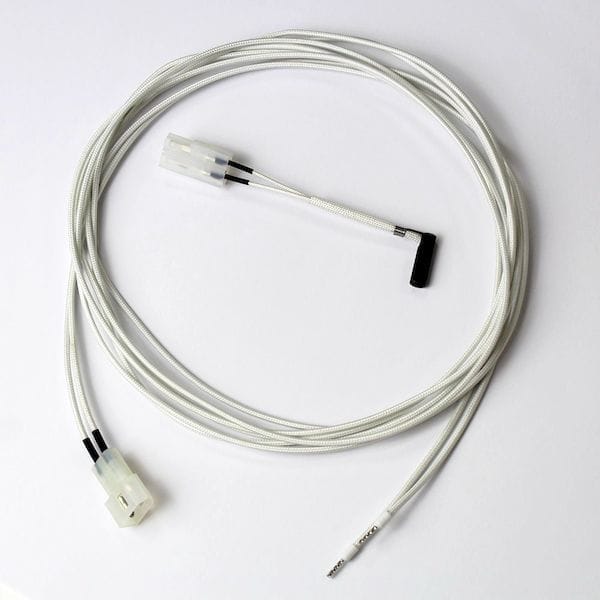![New very high temperature heater cartridge [Source: E3D-Online]](https://fabbaloo.com/wp-content/uploads/2020/05/image-asset_img_5eb0a437c9a2b.jpg)
Things will get a lot hotter in desktop 3D printing after E3D-Online’s latest announcement.
The UK-based supplier of 3D printer components has announced a set of components designed to provide a means for desktop 3D printers to practically achieve much higher operating temperatures.
The components include a heater cartridge specifically designed to hit as high as 500C! The cartridge is inserted into a metal block hot end, where the heat is distributed to the nozzle and softens passing filament. The other new component is a heated print bed that’s capable of 200C, a temperature far beyond the usual 100C of most heated beds.
The idea behind these new components is that more desirable engineering materials require far higher temperatures to properly 3D print them. These new components from E3D-Online should permit handy 3D printer operators to upgrade their equipment to be able to handle advanced materials such as PEEK, PAEK, ULTEM and others.
While you can sometimes attempt to run standard 3D printing equipment at such high temperatures, you run into many risks. Components may fail in short order, or some metal components, such as the hot end block itself may soften! E3D recommends replacing such items with their nickel-plated copper components that can survive such an environment.
![A 200C-capable 3D printer bed [Source: E3D-Online]](https://fabbaloo.com/wp-content/uploads/2020/05/image-asset_img_5eb0a438342b3.jpg)
The heating cartridge is interesting in that it is made from metal and ceramic, and thus able to withstand considerable heat. It includes a glass fiber cable that similarly cannot easily melt, and a convenient 90 degree turn at the hot end making for cleaner installations. I would like the 90 degree feature available for EVERY 3D printer, regardless of heat, as cable tangles near the hot end can complicate print failures where stray material gets caught.
The heater cartridge is priced at £48 (US$62), and the new heated bed is available in three sizes and two voltages, with pricing ranging from £86 (US$111) to £150 (US$194).
There are a number of implications here.
First, high temperatures are, in fact, HIGH. The operating temperatures these components are designed for are inherently dangerous. Anyone considering upgrading their 3D printer to use them had best consider the machine as a whole: a machine designed to 3D print items under 250C may not be able to accept a 500C temperature without changing more than just the heater and the bed. There is risk of machine and environment damage, particularly if the installation is not properly thought out. E3D provides this warning:
“Please use appropriate protective equipment while operating a machine using this bed, lest you end up melting more than just filament!”
One serious consideration 3D printer operators must address is controlling the generated heat. Virtually all 3D printers successfully 3D printing high-temperature materials have full build volume enclosures, some quite sophisticated. The enclosure captures some of the heat and provides a very warm environment in which the print takes place. This decreases the possibility of failure and in particular warping.
Meanwhile, many desktop 3D printers used by E3D clients are of open design, and a complete enclosure should be considered.
Another implication is to the competition.
Up to now the only practical way to perform high-temperature 3D printing was to obtain a professional 3D printer designed to operate at such temperatures. There are multiple models now offered by several companies that can do so, and they’ve found a healthy industry niche in which to market their products. Most of them rightly charge a premium over standard 3D printers for the ability to print high temperature materials.
But now E3D has provided a relatively inexpensive set of components that could help transform many machine designs into high temperature versions. What does this mean for the premium priced professional machine makers?
I think it could spell some trouble. At the very least this will provide downward pressure on pricing, because the E3D components will permit the emergence of new, lower-priced competing machines. Some existing manufacturers may switch to E3D’s components to reduce their own costs.
Either way the E3D announcement will provide a new, lower-cost path towards engineering materials for everyone.
Via E3D-Online











An Austrian company has developed an incredibly sophisticated end-to-end automation system for metal 3D print post processing.